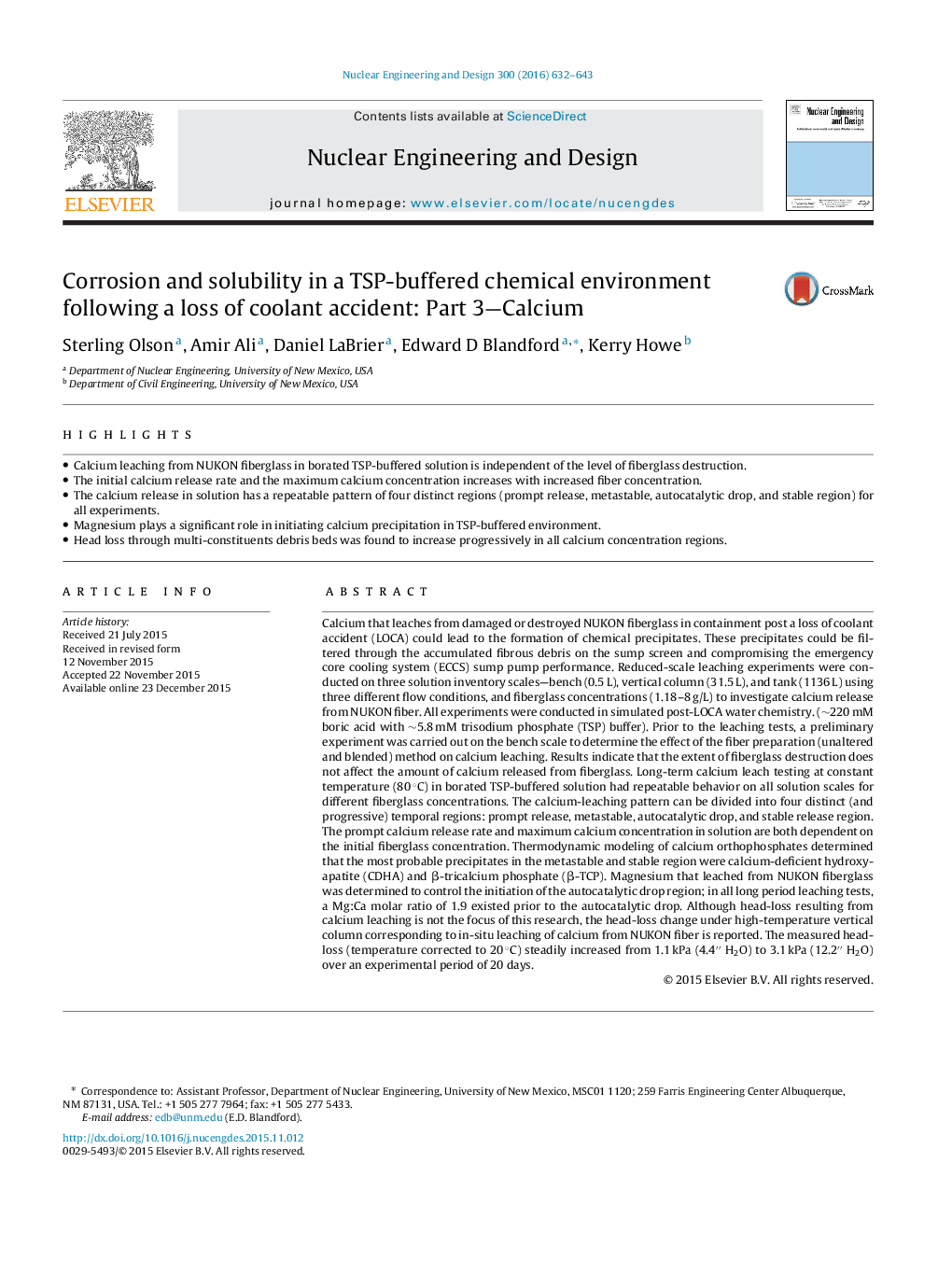| کد مقاله | کد نشریه | سال انتشار | مقاله انگلیسی | نسخه تمام متن |
|---|---|---|---|---|
| 6760222 | 511694 | 2016 | 12 صفحه PDF | دانلود رایگان |
عنوان انگلیسی مقاله ISI
Corrosion and solubility in a TSP-buffered chemical environment following a loss of coolant accident: Part 3-Calcium
دانلود مقاله + سفارش ترجمه
دانلود مقاله ISI انگلیسی
رایگان برای ایرانیان
موضوعات مرتبط
مهندسی و علوم پایه
مهندسی انرژی
مهندسی انرژی و فناوری های برق
پیش نمایش صفحه اول مقاله

چکیده انگلیسی
Calcium that leaches from damaged or destroyed NUKON fiberglass in containment post a loss of coolant accident (LOCA) could lead to the formation of chemical precipitates. These precipitates could be filtered through the accumulated fibrous debris on the sump screen and compromising the emergency core cooling system (ECCS) sump pump performance. Reduced-scale leaching experiments were conducted on three solution inventory scales-bench (0.5 L), vertical column (31.5 L), and tank (1136 L) using three different flow conditions, and fiberglass concentrations (1.18-8 g/L) to investigate calcium release from NUKON fiber. All experiments were conducted in simulated post-LOCA water chemistry. (â¼220 mM boric acid with â¼5.8 mM trisodium phosphate (TSP) buffer). Prior to the leaching tests, a preliminary experiment was carried out on the bench scale to determine the effect of the fiber preparation (unaltered and blended) method on calcium leaching. Results indicate that the extent of fiberglass destruction does not affect the amount of calcium released from fiberglass. Long-term calcium leach testing at constant temperature (80 °C) in borated TSP-buffered solution had repeatable behavior on all solution scales for different fiberglass concentrations. The calcium-leaching pattern can be divided into four distinct (and progressive) temporal regions: prompt release, metastable, autocatalytic drop, and stable release region. The prompt calcium release rate and maximum calcium concentration in solution are both dependent on the initial fiberglass concentration. Thermodynamic modeling of calcium orthophosphates determined that the most probable precipitates in the metastable and stable region were calcium-deficient hydroxyapatite (CDHA) and β-tricalcium phosphate (β-TCP). Magnesium that leached from NUKON fiberglass was determined to control the initiation of the autocatalytic drop region; in all long period leaching tests, a Mg:Ca molar ratio of 1.9 existed prior to the autocatalytic drop. Although head-loss resulting from calcium leaching is not the focus of this research, the head-loss change under high-temperature vertical column corresponding to in-situ leaching of calcium from NUKON fiber is reported. The measured head-loss (temperature corrected to 20 °C) steadily increased from 1.1 kPa (4.4â²â² H2O) to 3.1 kPa (12.2â²â² H2O) over an experimental period of 20 days.
ناشر
Database: Elsevier - ScienceDirect (ساینس دایرکت)
Journal: Nuclear Engineering and Design - Volume 300, 15 April 2016, Pages 632-643
Journal: Nuclear Engineering and Design - Volume 300, 15 April 2016, Pages 632-643
نویسندگان
Sterling Olson, Amir Ali, Daniel LaBrier, Edward D Blandford, Kerry Howe,